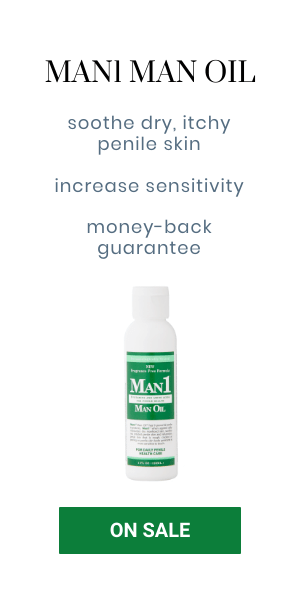Penis rash is usually identified by fairly benign skin eruptions, such as bumps, lesions, or simple discoloration. Practicing good penis health requires identifying the penis rash in order to treat it. Sometimes, unfortunately, the rash can be less benign, signifying the presence of an STI. One of the more uncommon of these STIs is Donovanosis, also called granuloma inguinale.
Donovanosis
Donovanosis is a bacterial infection that gets its name from the factor that causes it, known as Donovan bodies. It is almost always passed on through sexual contact – and sometimes it isn’t alone, meaning that doctors often find other STIs accompanying it.
The penis rash first appears as lesions, but they fairly quickly evolve into sores, usually a beefy red color. The sores may start out small but they can grow in size fairly quickly. These penis sores are unattractive, and they can appear on the balls and the crotch or thighs as well. From the time the penis is exposed to the Donovan bodies until the time sores develop is usually between 10 and 40 days. That means that by the time a guy knows he has Donovanosis, it’s had time to establish a beachhead in his body.
Left untreated, these sores are not only sensitive and painful but destructive. They can seriously damage penile tissue and impact the long term health of the organ. At a minimum, scarring is likely to occur.
The “good” news is that Donovanosis doesn’t spread as easily as many other STIs. Typically it takes several exposures in order to develop. That means that, while it certainly is possible for a man to get it from one bout of unprotected sex, usually it takes multiple exposures before it “takes.”
The bad news is that Donovanosis is considered chronic. In many cases, it will go away but may recur at a later time, often without any identifiable “trigger.”
The tropics
Approximately 100 cases of the disease are reported annually in the United States, and in general people who live in temperate zones are pretty safe from Donovanosis. It is much more common in tropical and subtropical zones, and especially in undeveloped countries. In many areas, such as the Caribbean, New Guinea and Southeast Asia, it is considered endemic.
People who visit areas with a high incidence of Donovanosis are advised to take appropriate precautions if they engage in sex with those who make their homes there.
Treatment
Because of its relative rareness in the developed world, there have not been many studies focusing on this disease. It is generally understood that a course of antibiotics is necessary to decimate the bacteria that causes the condition. The U.S. Centers for Disease Control and Prevention recommends use of azithromycin; other recommended treatments involve doxycycline, erythromycin or ciprofloxacin. Three weeks is generally the minimum recommended length of treatment, and longer may be required depending upon the severity of infection.
Monitoring should be conducted periodically, even after sores have disappeared. As mentioned, recurrence is common. Avoiding sexual engagement with an infected person – whether intercourse, oral or manual – is recommended. Use of a condom is vital.
Donovanosis is one penis rash that a man wants to avoid. Maintaining general overall penis health is recommended, simply to maintain the penis appropriately, so using a top drawer penis health crème (health professionals recommend Man1 Man Oil, which is clinically proven mild and safe for skin) is a good idea. The best crème helps build up penile resistance to infection by supplying it with vitamins like A, B5, C and D that can strengthen penis skin, support cellular function and discourage bacterial presences. Also advised is a crème that contains alpha lipoic acid. This potent antioxidant is superb at fighting free radicals, which left on their own can create tremendous oxidative damage to penile cells.
